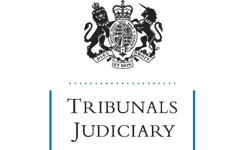|
Notes:
|
Reported as [2010] AACR 5
Armed Forces Compensation Scheme – correct application of the Scheme – injuries resulting from medical treatment – meaning of “complex injury”, “covering” a certain area and “permanent functional limitation or restriction”– relationship between Table 4 and the other tables
Both claimants were awarded compensation by the Secretary of State under the Armed Forces and Reserve Forces (Compensation Scheme) Order 2005 (the Scheme) for fracture to the femur within Table 8 of the tariff, caused by service. In each case the fracture had been fixed with an intramedullary nail. In each case the tribunal found that the claimant had suffered a complex injury affecting all or most of the area from thigh to knee, causing a permanent functional limitation and restriction and identified descriptors in Table 2 as appropriate, significantly increasing the compensation payable. The Secretary of State appealed. The appeal was heard by a Three-Judge Panel of the Upper Tribunal, which held that the tribunals had not properly analysed the meaning of “complex injury” or “complications” and held that additional injuries resulting from medical treatment would, unless otherwise specifically dealt with in a descriptor, fall to be compensated in the usual way, so that the insertion of the intramedullary nail constituted an additional injury which should be taken into consideration when assessing the level of compensation. The Upper Tribunal also held that, for an injury to count as “covering” an area of a limb, it did not have to be visible on the surface. The Upper Tribunal went on to analyse a number of other issues relating to the interpretation of the Scheme, in particular whether either case might involve a “disorder” within Table 4. The Secretary of State appealed to the Court of Appeal.
Held, allowing the appeal in part, that:
1. the starting point for all descriptors is the claimant’s overall condition as at the date of the decision on the claim including injuries which can properly be said to have been caused by service, notwithstanding that they may arise at some later date after the initial injury (paragraphs 47 to 55);
2. the object of the exercise of choosing the relevant descriptor or descriptors is to find the appropriate descriptor or descriptors which most fully and fairly reflect the various features of the injury or illness, and there will be circumstances where it is legitimate for the decision to be informed by comparison with other parts of the Scheme, provided distortion of the application of the Scheme does not result (paragraphs 56 to 60);
3. the fact that an injury results from medical treatment does not of itself necessarily break the chain of causation, unless it results from medical negligence, but injuries resulting from proper and appropriate medical treatment designed to cure the patient or alleviate pain cannot properly be said either to exacerbate or involve the creation of a separate injury, unless the appropriate medical treatment carries a risk of further distinct injuries, or the exacerbation of existing injuries, and the risk materialises, but may extend the area of the original injury or constitute a “complication” (paragraphs 61 to 75);
4. the expression “complex injury” is clearly defined and it is a matter for the fact-finding tribunal to determine whether the injury affects all or most of the identified structures or not and where the decision-maker can properly treat the original injury and any subsequent injuries which are to be attributed to service as being a single injury there is no reason in principle why the second injury could not, in an appropriate case, change the characterisation of an injury to a complex injury (paragraphs 76 to 80);
5. the word “covering” is to be construed according to its natural meaning that the injury should simply embrace the area from thigh to knee, or knee to ankle, as the case may be, whether visible on the surface or not, and the Scheme was not to be construed in accordance with the unexpressed intentions of the draftsmen (paragraphs 81 to 89);
6. in the absence of any qualification of the words “permanent functional limitation or restriction”, the Upper Tribunal was entitled to use the concept of “more than trivial” to describe the point at which compensation would be payable and in a practical scheme intended to work broad justice it could not have been intended to draw such fine and difficult distinctions as that between moderate and non-trivial effects (paragraphs 89 to 93);
7. recourse cannot be had to Table 4, which deals with physical disorders including infectious diseases, whenever an injury results in functional limitations or restrictions as Table 4 is intended to deal only with diseases, and in any event, if an injury falls within the detailed definition of a particular descriptor, it cannot have been the intention of the scheme that more favourable compensation can be awarded by recourse to the far more generalised terms of Table 4 (paragraphs 94, 109 and 125).
The matter was sent back to the First-tier Tribunal to reconsider the issue of compensation in the light of the guidance given by the Court.
|
